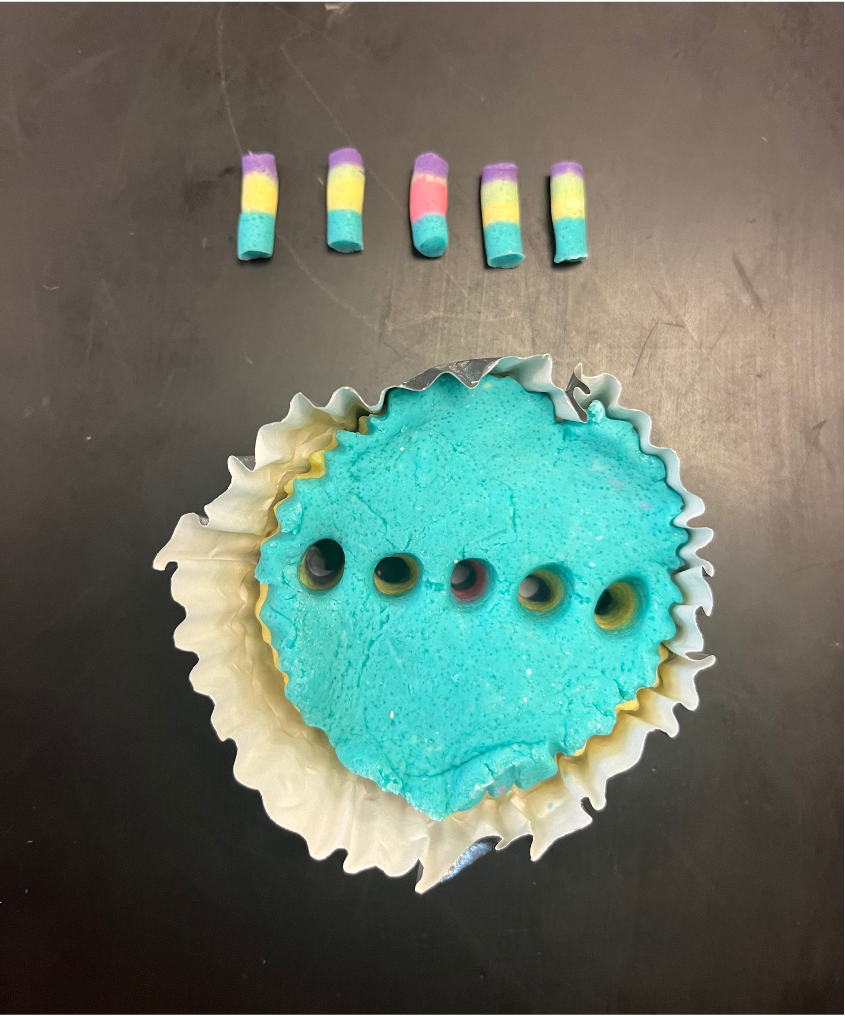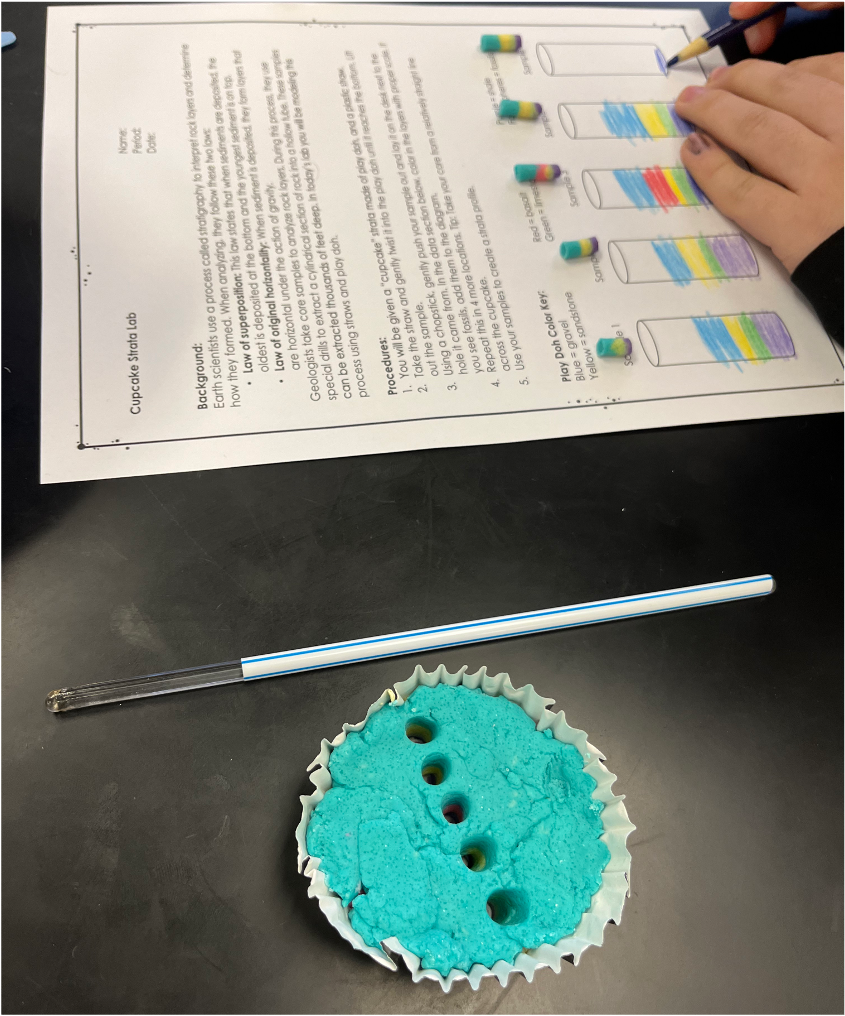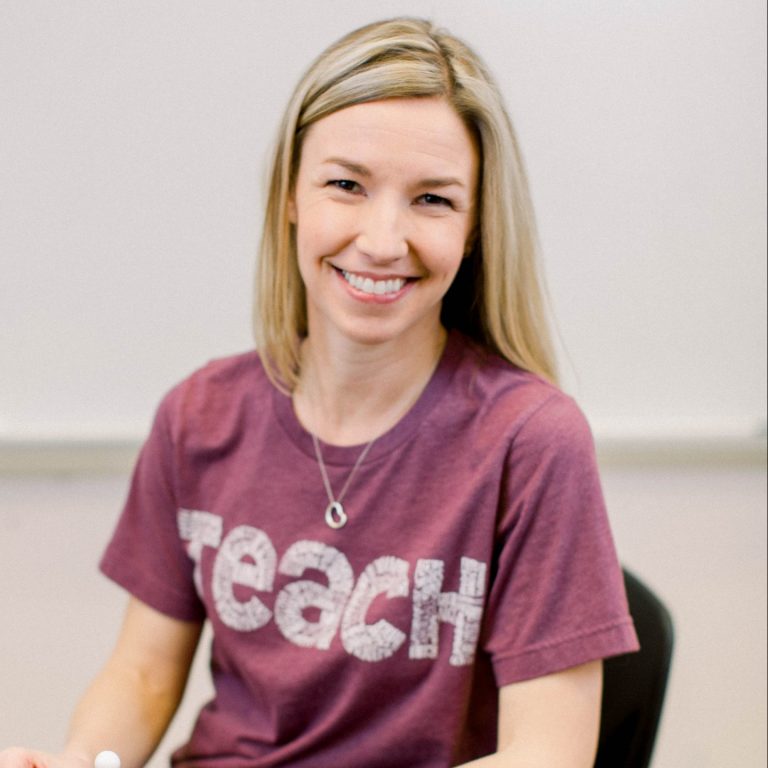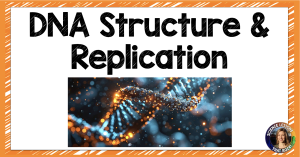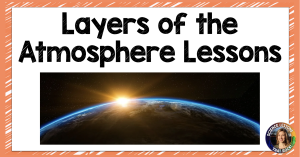
We recently covered one of my favorite units- relative and absolute dating (and fossils of course!) I love asking questions like… “how do we know the earth is 4.5 billion years old?” and “how do we know humans have only been around 100,000 years?” Dating is not a difficult topic for students to grasp, and there are some fun ways to make learning hands on. I wanted a way for students to learn about stratigraphy and how scientists use coring methods to learn about what’s below our feet. Enter: play doh.
Stratigraphy Lab Prep
This lab uses a decent amount of play doh. You can absolutely buy it if you want, but it’s cheaper to make if you need large quantities. I used the following recipe: 2 cups flour, 1 cup salt, 1 cup water, 2 tablespoons alum or cream of tartar, 2 tablespoons vegetable oil, and food coloring. Overall I made 4 batches of dough and it was more than enough to last me 5 class periods. (Tip: add the food coloring to the water before mixing).
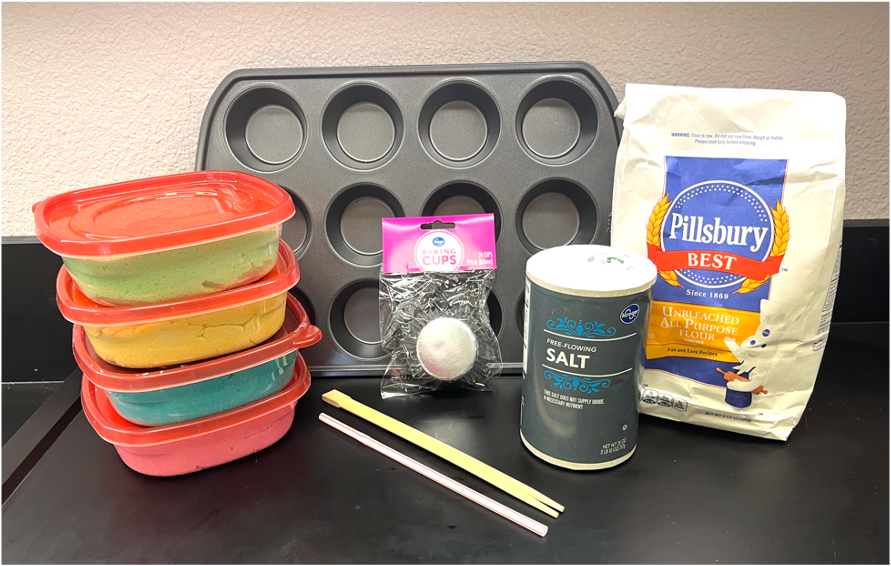

Once your dough is mixed and ready, it’s time to layer! Place a thin layer of play doh in the bottom of a foil cupcake liner. You can decide how many layers you want to add, the thickness of each layer, add cross cuts… get creative! Below is an image of the 5 layers I included in my cupcake liner. I added small styrofoam balls from the dollar store to represent fossils. You could use anything else small (that won’t soften or dissolve within the dough) such as rice or small rocks. I personally made a new set between each class period, but you could make them all ahead of time if you wanted- just keep them in a ziploc bag so they don’t dry out.

Relative Dating Lab
Alright, now the fun begins! We began by talking about how coring works and when it is used. This same method is also used for tree cores, ice cores, and sediment cores, so I gave them some context. Each lab group was given a cupcake, colored pencils, a plastic straw, and a glass stir rod. Students pushed the straw into the play doh at 5 locations. They would carefully push the dough out of the straw with the glass stir rod (you could also use chopsticks or wooden skewers). Students had to draw the strata and infer what the inside of their cupcake looked like without being able to see the inside.
After students finished their diagrams and made inferences about the inside, they were allowed to cut their cupcakes open. Most did a really good job! They had to answer questions about their strata such as “which layer is the oldest?” and “which layer represents a cross cut?” They also had to explain the law of superposition, talk about fossils within their dough, and explain why they are found in sedimentary layers. Overall it was a really fun lab and the concept of relative dating was hit home. If you would like to check out the lab worksheet and powerpoint I used for this lesson, you can find it on my website or on TpT.
Rock on!


